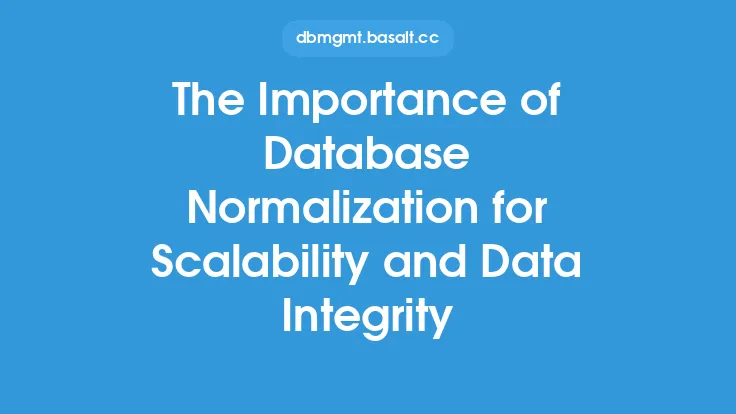Data redundancy and data security are two fundamental concepts in the realm of data management. While they may seem like separate entities, they are intricately linked, and understanding their relationship is crucial for ensuring the integrity and confidentiality of data. In this article, we will delve into the world of data redundancy and explore its connection to data security, highlighting the importance of this relationship in maintaining a robust and secure data management system.
Introduction to Data Redundancy
Data redundancy refers to the duplication of data within a database or across multiple databases. This duplication can occur intentionally, as a means of improving data availability and reducing the risk of data loss, or unintentionally, as a result of poor database design or inadequate data management practices. Intentional data redundancy is often implemented through techniques such as data replication, where data is duplicated across multiple servers or locations to ensure that it remains accessible in the event of a failure or outage.
Understanding Data Security
Data security, on the other hand, refers to the practices and protocols put in place to protect data from unauthorized access, theft, or corruption. This includes a range of measures, such as encryption, access controls, and authentication protocols, designed to safeguard data and prevent it from falling into the wrong hands. Data security is a critical component of any data management system, as it helps to prevent data breaches and protect sensitive information from being compromised.
The Relationship Between Data Redundancy and Data Security
The relationship between data redundancy and data security is complex and multifaceted. On one hand, data redundancy can improve data security by providing multiple copies of data, which can be used to recover from a data loss or corruption event. This is particularly important in the event of a disaster or outage, where data may be lost or become inaccessible. By having multiple copies of data, organizations can ensure that they can recover quickly and minimize the impact of the event.
On the other hand, data redundancy can also increase the risk of data breaches and unauthorized access. When data is duplicated across multiple locations, it can create additional vulnerabilities and entry points for attackers to exploit. For example, if an organization has multiple copies of sensitive data stored in different locations, it can increase the risk of that data being accessed or stolen by unauthorized individuals.
Benefits of Data Redundancy for Data Security
Despite the potential risks, data redundancy can provide several benefits for data security. For example, data redundancy can help to:
- Improve data availability: By providing multiple copies of data, organizations can ensure that data remains accessible even in the event of a failure or outage.
- Reduce the risk of data loss: Data redundancy can help to prevent data loss by providing multiple copies of data, which can be used to recover from a data loss event.
- Enhance data integrity: Data redundancy can help to ensure that data is accurate and consistent across multiple locations, which can help to prevent data corruption and errors.
Best Practices for Implementing Data Redundancy for Data Security
To implement data redundancy effectively and minimize the risks, organizations should follow best practices such as:
- Implementing data encryption: Encrypting data can help to protect it from unauthorized access, even if it is duplicated across multiple locations.
- Using access controls: Implementing access controls, such as authentication and authorization protocols, can help to ensure that only authorized individuals have access to data.
- Monitoring data activity: Monitoring data activity can help to detect and respond to potential security threats, such as unauthorized access or data breaches.
- Implementing data backup and recovery procedures: Implementing data backup and recovery procedures can help to ensure that data can be recovered quickly and efficiently in the event of a data loss or corruption event.
Technical Considerations for Implementing Data Redundancy
From a technical perspective, implementing data redundancy requires careful consideration of several factors, including:
- Data replication techniques: Organizations can use a range of data replication techniques, such as synchronous or asynchronous replication, to duplicate data across multiple locations.
- Data storage: Organizations should consider the storage requirements for duplicated data, including the need for additional storage capacity and the potential impact on storage costs.
- Network infrastructure: Organizations should consider the network infrastructure required to support data redundancy, including the need for high-speed networks and reliable connectivity.
- Data management software: Organizations should consider the data management software required to support data redundancy, including the need for software that can manage and synchronize duplicated data.
Conclusion
In conclusion, data redundancy and data security are intricately linked, and understanding their relationship is crucial for ensuring the integrity and confidentiality of data. While data redundancy can improve data security by providing multiple copies of data, it can also increase the risk of data breaches and unauthorized access. By following best practices and considering technical factors, organizations can implement data redundancy effectively and minimize the risks, ultimately helping to protect sensitive information and prevent data breaches.





